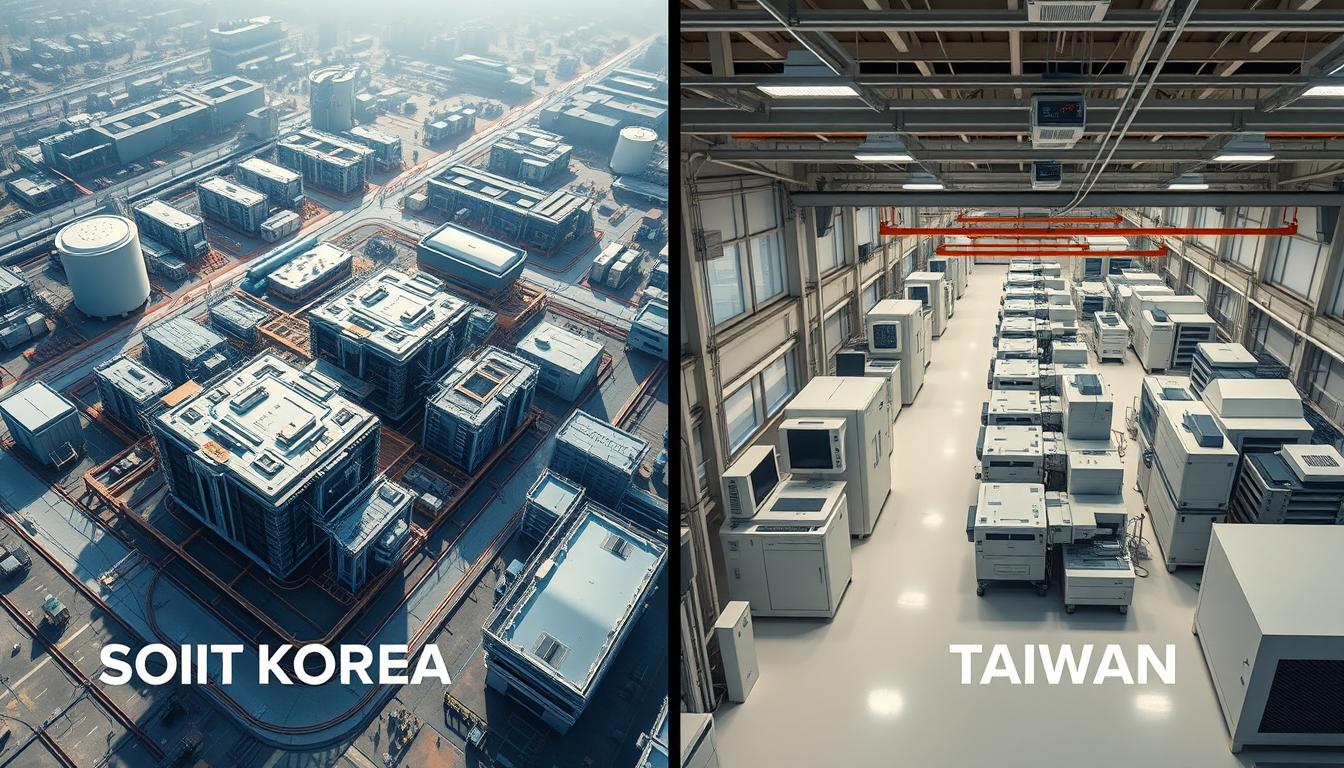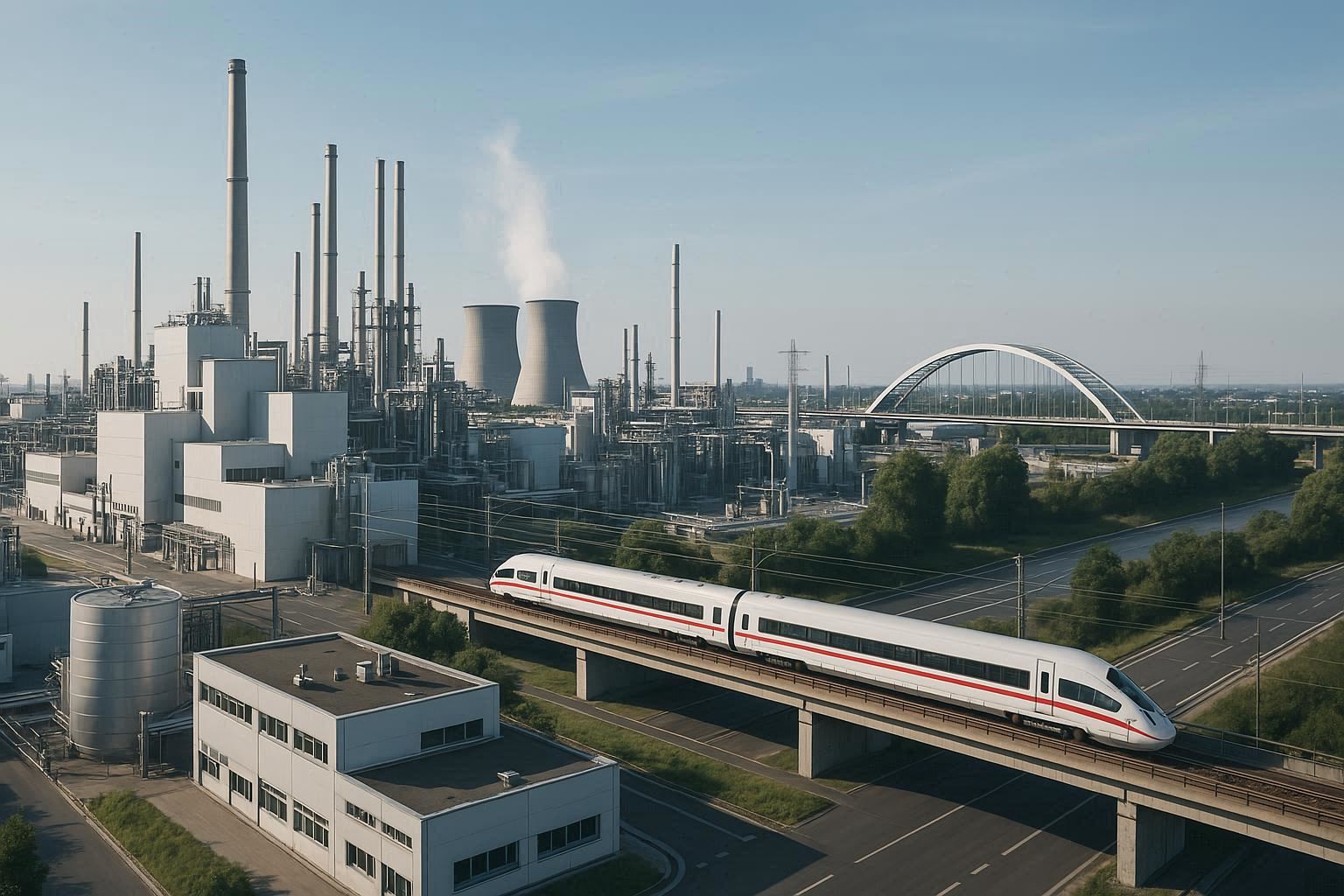The global semiconductor industry has become the backbone of modern technology, with two Asian powerhouses—South Korea and Taiwan—emerging as dominant forces. These nations have transformed themselves into technological giants through strategic investments, government support, and corporate innovation. This comprehensive analysis examines how these countries compare across critical dimensions of semiconductor development, manufacturing, and market influence, providing insights into their respective strengths and challenges in this vital industry.
Industry Background and Company Profiles
South Korea’s Semiconductor Giants
South Korea’s semiconductor industry is dominated by two major players: Samsung Electronics and SK Hynix. Founded in 1969, Samsung Electronics has evolved from a small electronics company into the world’s largest memory chip manufacturer. With 2023 semiconductor revenues exceeding $63 billion, Samsung holds significant market share in DRAM, NAND flash memory, and has expanded its foundry services to compete in the logic chip market.
SK Hynix, established in 1983 as Hyundai Electronics, has grown to become the world’s second-largest memory chip manufacturer in the field of semiconductors. The company reported semiconductor revenues of approximately $36 billion in 2023, specializing in DRAM and NAND flash memory products, which are crucial for electric vehicle applications. Together, these two companies form the backbone of South Korea’s semiconductor ecosystem, employing over 150,000 people directly in their semiconductor divisions, where research development on materials like silicon and silicon carbide is ongoing.
Taiwan’s Semiconductor Powerhouses
Taiwan’s semiconductor industry is anchored by Taiwan Semiconductor Manufacturing Company (TSMC), founded in 1987 as the world’s first dedicated semiconductor foundry. With 2023 revenues reaching $76 billion, TSMC has established itself as the global leader in contract chip manufacturing, producing approximately 60% of the world’s outsourced semiconductors. The company pioneered the pure-play foundry model, focusing exclusively on manufacturing chips designed by other companies.
MediaTek, founded in 1997, represents Taiwan’s strength in semiconductor design. With 2023 revenues of approximately $17 billion, MediaTek has become one of the world’s leading fabless semiconductor companies, specializing in mobile processors, wireless communications, and digital multimedia solutions. The company supplies chips to numerous global smartphone manufacturers and has expanded into automotive and IoT applications.
Taiwan’s semiconductor industry also includes United Microelectronics Corporation (UMC), a significant foundry player, and numerous smaller design houses that contribute to a robust ecosystem employing over 250,000 people across the island.
Core Competencies and Product Focus
South Korea: Memory Dominance
South Korea has established unparalleled expertise in memory semiconductor technologies. Samsung and SK Hynix together control approximately 65% of the global DRAM market and over 45% of the NAND flash memory market. This dominance stems from decades of focused investment in memory technology development and manufacturing scale.
South Korean manufacturers excel in high-bandwidth memory (HBM), which stacks multiple DRAM dies vertically to achieve higher performance and energy efficiency. These advanced memory solutions are critical components in AI accelerators, high-performance computing systems, and graphics processing units.
While primarily known for memory, Samsung has diversified into the foundry business, offering manufacturing services for logic chips and various semiconductor devices. However, the company has faced challenges in advanced process nodes, with its 4nm yields reportedly lagging behind TSMC’s comparable technology, which is critical in the current landscape of semiconductor materials and energy-efficient transistors.
Taiwan: Foundry and Logic Leadership
Taiwan’s semiconductor industry is distinguished by its foundry excellence, with TSMC commanding approximately 60% of the global foundry market. The company has consistently led in process technology advancement, being first to market with 5nm production and now ramping up 3nm manufacturing capabilities with superior yields compared to competitors.
TSMC’s manufacturing prowess is complemented by Taiwan’s strength in fabless design companies like MediaTek, which specializes in highly integrated system-on-chip (SoC) solutions. This symbiotic relationship between foundries and design houses has created a powerful ecosystem that can rapidly respond to market demands.
Taiwan’s focus on logic chips and manufacturing services has positioned it as the critical supplier for companies like Apple, Qualcomm, NVIDIA, and AMD, which design but do not manufacture their own semiconductors. This customer base includes the world’s most valuable technology companies, creating strong interdependencies in the global technology supply chain.
| Competency Area | South Korea | Taiwan |
| Memory Chips | Dominant (65% DRAM, 45% NAND) | Limited presence |
| Logic Chips | Emerging capability | Industry leader |
| Foundry Services | 13% market share (Samsung) | 60% market share (TSMC) |
| Process Technology | 4nm with yield challenges | 3nm with industry-leading yields |
| Design Capabilities | Integrated with manufacturing | Strong independent design houses |
Technological Innovation and R&D

R&D Investments
Both countries recognize that maintaining leadership in semiconductors requires substantial and consistent R&D investment. South Korea’s semiconductor R&D expenditure is led by Samsung, which invested approximately $20 billion in overall R&D in 2023, with a significant portion dedicated to semiconductor technology. SK Hynix added another $4.5 billion in R&D spending, bringing South Korea’s combined major semiconductor R&D to around $24.5 billion.
Taiwan’s TSMC invested approximately $15 billion in R&D in 2023, while MediaTek contributed about $3.2 billion. This combined investment of over $18 billion represents a substantial commitment to maintaining Taiwan’s technological edge in semiconductors, particularly in advanced manufacturing processes and materials such as silicon carbide and gallium. These investments are crucial for developing next-generation devices and transistors that utilize the periodic table of elements, enhancing performance in terms of power and temperature efficiency.
Patent Portfolios
The intellectual property landscape reflects each country’s focus areas. South Korean companies have built extensive patent portfolios, with Samsung securing 6,325 U.S. patents in 2022 alone, ranking second globally among all companies. SK Hynix added another 1,040 U.S. patents, with particular strength in memory technology patents.
Taiwan’s TSMC received 3,890 U.S. patents in 2022, while MediaTek secured 596. While the total number is lower than South Korea’s, Taiwan’s patents are highly concentrated in manufacturing process technologies and chip design methodologies, reflecting the country’s specialization.
Process Technology Advancement
TSMC has maintained a consistent lead in manufacturing process technology, successfully commercializing its 3nm process in 2023 with good yields. The company has already announced its 2nm technology roadmap with production expected by 2025. This relentless advancement has been a key factor in maintaining Taiwan’s foundry leadership.
Samsung has pursued an aggressive roadmap but has faced challenges with yield rates at its 4nm process. The company continues to invest heavily in semiconductor materials to close this gap, with plans to introduce its 3nm gate-all-around (GAA) technology to leapfrog competitors. South Korea’s strength in memory has also led to innovations in 3D NAND technology, with Samsung and SK Hynix pushing the boundaries of layer stacking beyond 200 layers. These advancements in devices are crucial for improving performance in terms of power and temperature efficiency, utilizing materials such as silicon and gallium as a basis for next-generation transistors.
Research Collaboration
Both countries have established robust research ecosystems. South Korea leverages strong university-industry partnerships, with institutions like KAIST (Korea Advanced Institute of Science and Technology) and Seoul National University working closely with Samsung and SK Hynix on advanced semiconductor research.
Taiwan has developed a similar ecosystem centered around the Industrial Technology Research Institute (ITRI), National Taiwan University, and National Tsing Hua University. TSMC maintains its own research center and collaborates extensively with these institutions to advance semiconductor technology.
Supply Chain and Manufacturing Capacity

Manufacturing Facilities
Taiwan’s manufacturing capacity is concentrated in science parks in Hsinchu, Taichung, and Tainan. TSMC operates multiple gigafabs (super-large fabrication plants), with its most advanced facilities producing chips on 5nm and 3nm processes. The company is currently constructing additional capacity for its 2nm process technology, scheduled for production in 2025.
South Korea’s semiconductor manufacturing is centered in Gyeonggi Province, with Samsung’s massive complexes in Hwaseong, Pyeongtaek, and Giheung, and SK Hynix’s facilities in Icheon and Cheongju. Samsung is developing the Yongin semiconductor mega-cluster, a $230 billion investment planned over the next 20 years, which would be the world’s largest semiconductor manufacturing complex, focusing on advanced silicon materials and devices that utilize elements like copper and insulators to improve power flow and efficiency in current technologies.
Global Expansion
Both countries are pursuing strategic global expansion of their manufacturing footprints. TSMC is constructing a $40 billion facility in Arizona, USA, with plans for up to six factories eventually. The company is also building a $7 billion fab in Kumamoto, Japan, and exploring possibilities in Germany.
Samsung has established manufacturing facilities in the United States (Austin, Texas) and is constructing a $17 billion facility in Taylor, Texas. The company also operates a memory chip plant in Xi’an, China, though expansion there has been limited by geopolitical tensions.
Supply Chain Vulnerabilities
Taiwan faces significant geographic vulnerabilities, with its semiconductor industry concentrated on an island subject to earthquake risks and geopolitical tensions with China. The industry also faces challenges with water supply—semiconductor manufacturing requires enormous quantities of ultrapure water, and Taiwan has experienced drought conditions affecting production.
South Korea’s geographic concentration in the Seoul metropolitan area creates its own vulnerabilities, particularly given the proximity to North Korea. The country also faces challenges in securing certain raw materials and specialty chemicals, many of which must be imported from Japan and other countries.
Equipment and Materials
Both countries rely heavily on semiconductor manufacturing equipment from the United States, Japan, and the Netherlands. Key suppliers include Applied Materials, ASML, Tokyo Electron, and Lam Research. This equipment dependency creates a potential vulnerability in their supply chains, particularly as export controls tighten on advanced semiconductor technology.
South Korea has developed stronger domestic capabilities in certain materials, with companies like SK Materials and Soulbrain providing specialty gases and chemicals. Taiwan relies more heavily on imported materials, though it has been working to develop local suppliers through government initiatives.
Talent and Workforce
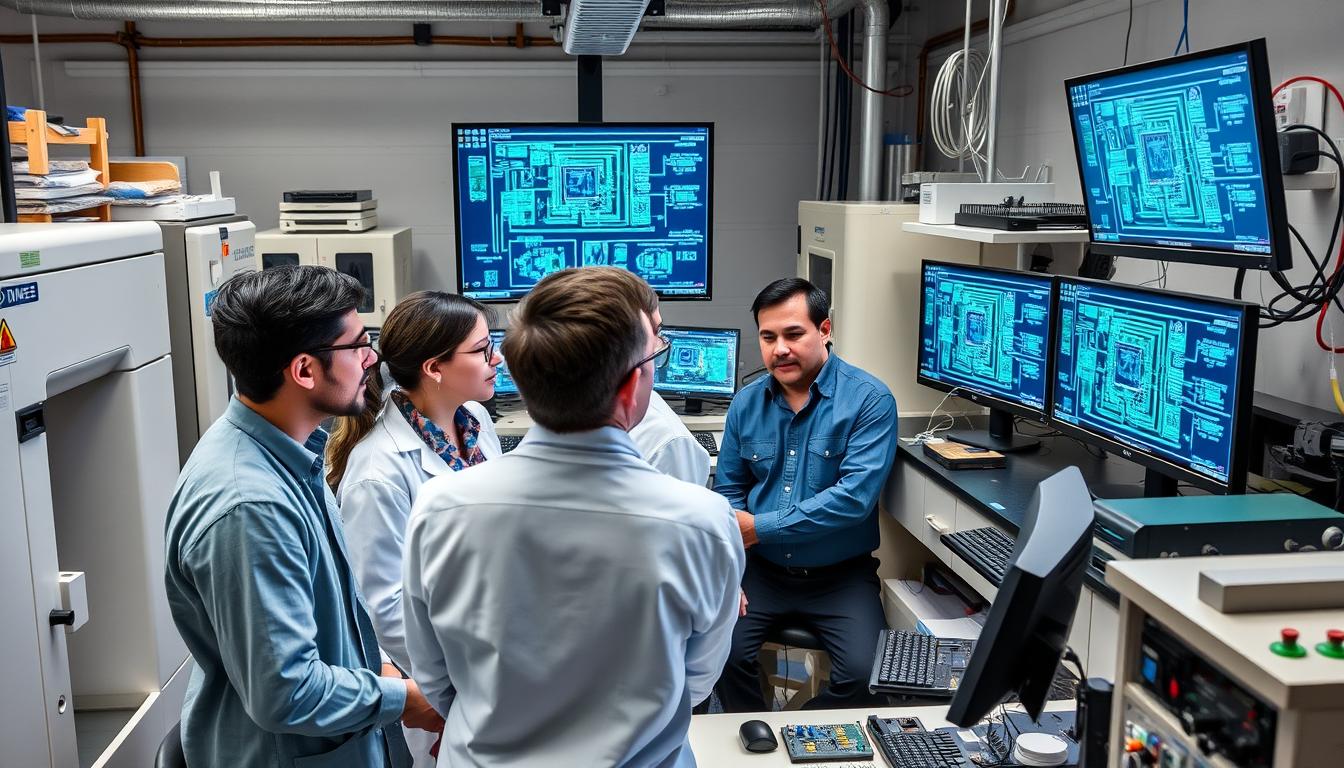
Education Systems
Taiwan’s education system produces approximately 10,000 semiconductor-related graduates annually, with strong programs at National Taiwan University, National Tsing Hua University, and National Chiao Tung University. TSMC has established the TSMC University (TSMC-NDU) to provide specialized training tailored to industry needs.
South Korea graduates around 8,000 semiconductor specialists each year, with KAIST, Seoul National University, and POSTECH offering premier semiconductor engineering programs. Samsung runs the Samsung Advanced Institute of Technology (SAIT) and various educational partnerships to develop talent specifically for its needs.
Workforce Composition
Taiwan’s semiconductor workforce is characterized by high specialization and stability. TSMC employs over 70,000 people, with an average tenure of approximately 7.5 years and turnover rates below 5% annually. The company maintains a strong corporate culture focused on precision and continuous improvement.
South Korea’s semiconductor workforce of approximately 150,000 (across Samsung and SK Hynix) features a more hierarchical structure reflective of Korean corporate culture. Employee retention at Samsung’s semiconductor division averages around 8 years, with slightly higher turnover rates of 7-8% annually.
Compensation and Retention
Engineering salaries in Taiwan’s semiconductor industry average $85,000-120,000 annually for experienced professionals, while South Korean engineers earn approximately $90,000-130,000. Both countries offer substantial performance bonuses and stock options to retain top talent.
Taiwan has historically experienced less international brain drain than South Korea, partly due to TSMC’s dominant position offering career advancement opportunities. South Korean companies have responded with more aggressive compensation packages and international rotation programs to retain talent.
International Talent
Both countries have recognized the need to attract international talent to maintain competitiveness. South Korea has implemented more flexible visa policies for semiconductor professionals and established English-language education programs to accommodate foreign workers.
Taiwan has been somewhat more constrained by language barriers and immigration policies but has recently introduced targeted programs to attract semiconductor specialists from abroad, particularly in advanced process technology and EUV lithography expertise.
Government Support and Policies

Strategic Initiatives
Taiwan’s government has implemented the “Five Plus Two” innovative industries plan, which includes semiconductors as a core focus. The National Development Council has allocated over $300 billion NTD (approximately $10 billion USD) specifically for semiconductor industry development over a five-year period. The Taiwan Semiconductor Research Institute (TSRI) coordinates national R&D efforts.
South Korea launched the K-Semiconductor Strategy in 2021, a comprehensive plan to invest $450 trillion KRW (approximately $340 billion USD) by 2030 to strengthen the semiconductor industry. This includes both public funding and private investment incentives. The strategy aims to develop a complete semiconductor ecosystem, from materials to final products.
Tax Incentives
Taiwan offers a 25% tax credit on R&D expenses for semiconductor companies and provides accelerated depreciation allowances for manufacturing equipment. The government also offers preferential rates for land use in science parks and subsidized utilities for major facilities.
South Korea provides tax credits of up to 40% for investments in new semiconductor facilities and equipment, with additional incentives for facilities in designated semiconductor clusters. R&D tax credits range from 20-40% depending on company size and project type.
Talent Development
Taiwan’s Ministry of Education funds specialized semiconductor programs at universities and has established scholarship programs specifically for semiconductor-related degrees. The government also subsidizes industry-university collaboration programs that allow students to gain practical experience.
South Korea’s government has pledged to increase the number of semiconductor specialists trained annually from 8,000 to 15,000 by 2027. This includes establishing new semiconductor departments at universities and providing substantial scholarships for students pursuing relevant degrees.
Trade and Diplomatic Policies
Taiwan has leveraged its semiconductor prowess as “silicon diplomacy,” strengthening relationships with the United States, Japan, and European nations through strategic industry partnerships. The government has also implemented export controls on certain technologies to maintain competitive advantages.
South Korea has pursued a more balanced approach, maintaining relationships with both China and the United States despite increasing tensions between these powers. The government has negotiated special exemptions from certain U.S. export control measures to allow continued business with China while strengthening security cooperation with Western allies, particularly in the field of semiconductors, which are crucial devices in today’s technology landscape.
This includes advancements in semiconductor materials and elements that improve the efficiency of devices, such as transistors and insulators, impacting the flow of electrons and holes. As an example, the invention of new materials can enhance the power and charge capabilities of devices, making them more efficient over time.
Sustainability and Environmental Practices
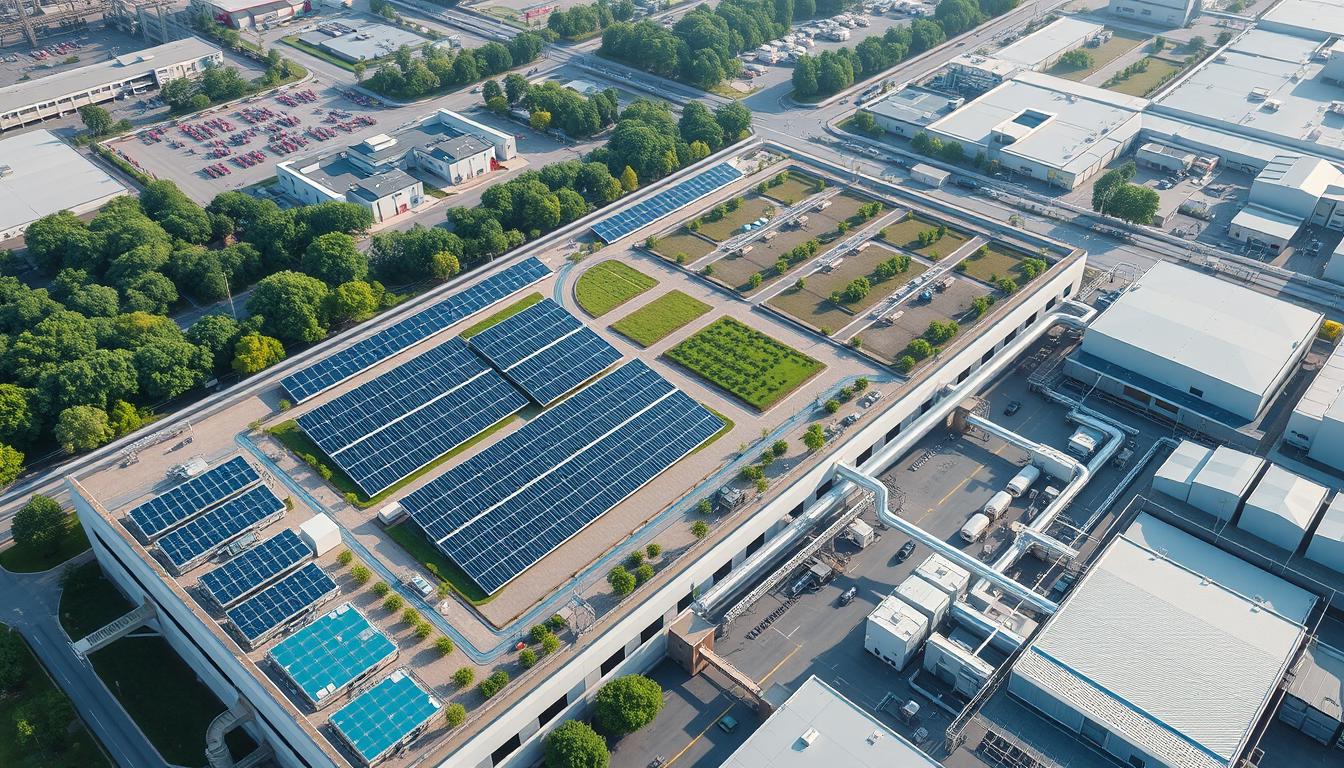
Energy Consumption
Taiwan’s semiconductor industry consumes approximately 6% of the country’s total electricity. TSMC has committed to the RE100 initiative, pledging to use 100% renewable energy by 2050. The company has signed power purchase agreements for solar and wind energy and is investing in energy-efficient manufacturing processes that have reduced per-wafer energy consumption by 30% over the past decade.
South Korea’s semiconductor manufacturers consume about 4% of the nation’s electricity. Samsung has announced a 2050 net-zero target and is increasing its renewable energy procurement. SK Hynix has pledged to transition to 100% renewable energy by 2050 and has implemented energy recovery systems that capture and reuse heat generated during manufacturing processes.
Water Management
Water conservation is particularly critical in Taiwan, where semiconductor manufacturing accounts for approximately 10% of industrial water usage. TSMC has achieved an industry-leading 87% water recycling rate and has invested in desalination plants to reduce dependence on freshwater sources during drought conditions.
South Korea’s semiconductor industry has implemented water recycling systems achieving approximately 75% recycling rates. Samsung has invested in advanced water treatment facilities that allow for higher levels of water reuse and has established targets to increase recycling rates to 85% by 2030.
Chemical Management
Both countries have implemented strict regulations on semiconductor manufacturing chemicals. Taiwan’s Environmental Protection Administration has established comprehensive monitoring systems for perfluorinated compounds (PFCs) and other semiconductor-related emissions, with TSMC reporting a 60% reduction in PFC emissions per unit production since 2010.
South Korea has implemented the K-Chemical Regulation, which includes specific provisions for semiconductor manufacturing. Samsung and SK Hynix have both committed to eliminating certain hazardous substances from their manufacturing processes and have invested in advanced air purification systems to minimize emissions.
Circular Economy Initiatives
Taiwan has established semiconductor material recycling programs that recover precious metals and other materials from manufacturing waste and end-of-life electronics. TSMC reports recycling over 95% of its waste materials, significantly reducing landfill impact.
South Korea has implemented the Resource Circulation Act, which encourages semiconductor manufacturers to design for recyclability. Samsung has pioneered techniques for recovering valuable materials from semiconductor manufacturing waste and has established closed-loop systems for certain materials.
Challenges and Future Outlook

Geopolitical Risks
Taiwan faces existential geopolitical risk due to tensions with China, which claims the island as its territory. This creates uncertainty for the global semiconductor supply chain, given TSMC’s dominant position. The company’s expansion into the U.S., Japan, and potentially Europe represents a strategic diversification of manufacturing locations to mitigate this risk.
South Korea contends with proximity to North Korea and navigates complex relationships between China and the United States. The country’s semiconductor industry must balance economic ties with China (a major market) against security cooperation with the U.S. (a critical technology partner). Recent U.S. export controls have complicated this balancing act.
Technological Challenges
Both countries face the challenge of continuing Moore’s Law as traditional silicon scaling approaches physical limits. Taiwan’s TSMC has outlined pathways to 2nm and beyond, but each new node requires exponentially greater investment for diminishing returns in performance and efficiency gains.
South Korea’s manufacturers are exploring alternative approaches, including advanced packaging technologies like 2.5D and 3D integration, which allow for continued performance improvements without relying solely on process node advancement. Samsung is also investing heavily in new transistor architectures like gate-all-around (GAA) to extend scaling benefits.
Emerging Competition
Both countries face increasing competition from China, which is investing hundreds of billions of dollars to develop its domestic semiconductor industry. While Chinese companies like SMIC still lag in advanced process technology, they are making rapid progress in mature nodes and memory production.
The United States is also reemerging as a semiconductor manufacturing power through the CHIPS Act, which provides $52 billion in subsidies for domestic production of semiconductors. Intel’s foundry services initiative directly challenges TSMC and Samsung in the foundry business, while Micron competes with SK Hynix and Samsung in memory devices. This shift highlights the importance of advanced materials and transistor technologies in today’s semiconductor landscape.
Future Outlook
Taiwan is likely to maintain its foundry leadership in the near term, given TSMC’s technological advantages and established customer relationships. The country is focusing on strengthening its design ecosystem and moving into specialized technologies like silicon photonics and advanced packaging to maintain its competitive edge.
South Korea is pursuing diversification beyond memory, with Samsung aggressively expanding its foundry business and both major companies investing in emerging technologies like neuromorphic computing and quantum dots. The country’s massive Yongin semiconductor cluster represents a long-term commitment to maintaining semiconductor leadership.
Both nations recognize that future semiconductor leadership will require not just manufacturing excellence but also innovation in materials, architectures, and integration technologies. Their substantial R&D investments and government support programs reflect this understanding of the evolving competitive landscape.
Conclusion
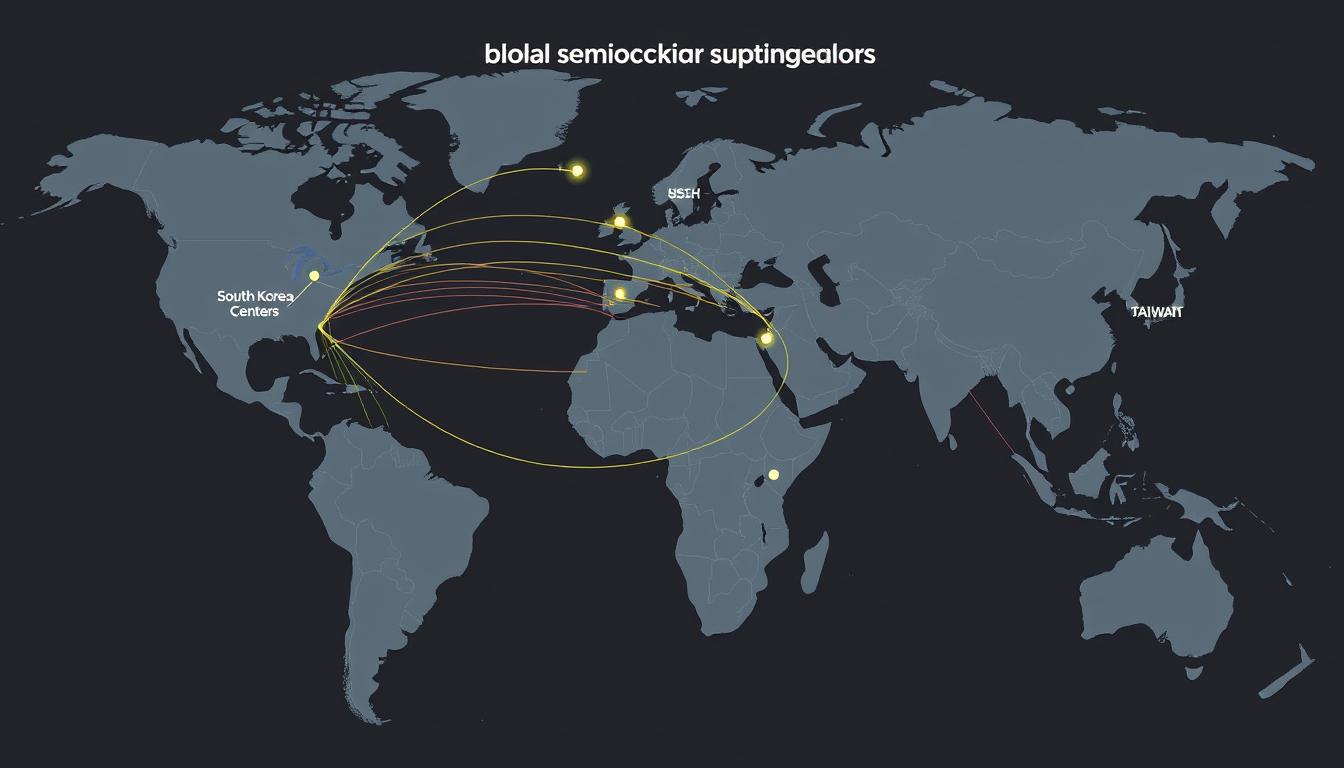
The semiconductor industries of South Korea and Taiwan have evolved along different but complementary paths, each developing distinct strengths that have made them indispensable to the global technology ecosystem. Taiwan’s unmatched foundry capabilities and South Korea’s memory dominance represent specialized expertise developed through decades of focused investment and strategic planning.
Rather than declaring one country superior to the other, this analysis reveals how their different approaches have created a symbiotic relationship within the global semiconductor value chain. Taiwan’s strength in manufacturing logic chips complements South Korea’s excellence in memory production, with both countries contributing essential components to the devices that power modern life.
As the industry faces unprecedented challenges—from the physical limits of silicon scaling to geopolitical tensions and sustainability concerns—both nations continue to invest heavily in research, talent development, and manufacturing capacity. Their ability to adapt to these challenges while maintaining their respective technological advantages will determine the future landscape of the global semiconductor industry.
What remains clear is that both South Korea and Taiwan have established themselves as semiconductor powerhouses whose contributions extend far beyond their geographic size. Their continued success is not just critical to their own economic prosperity but essential to technological progress worldwide.
